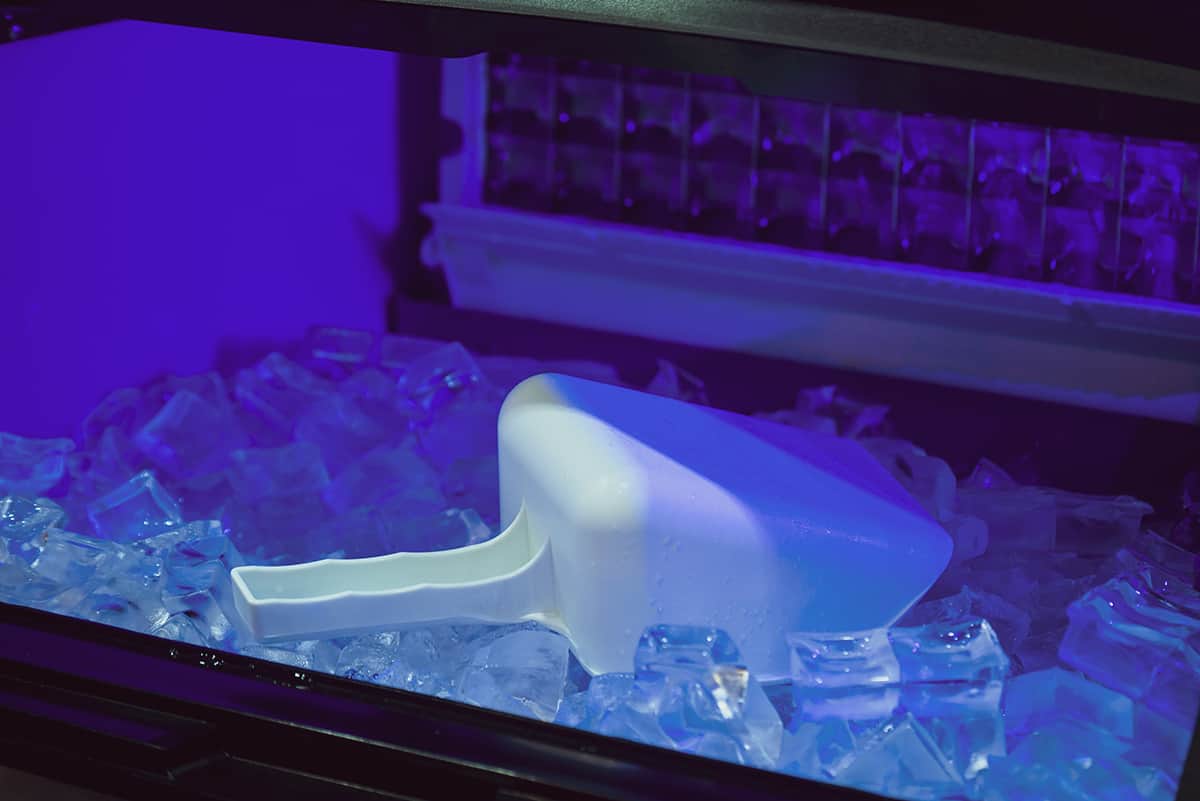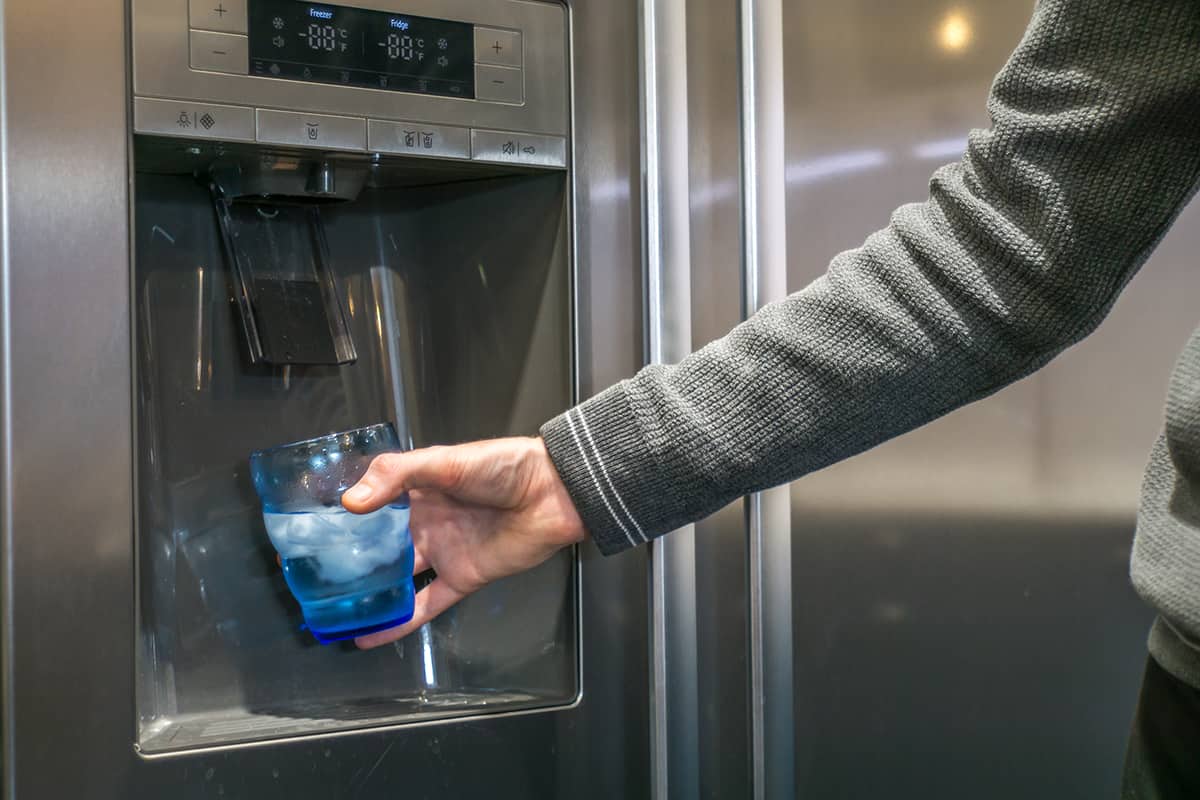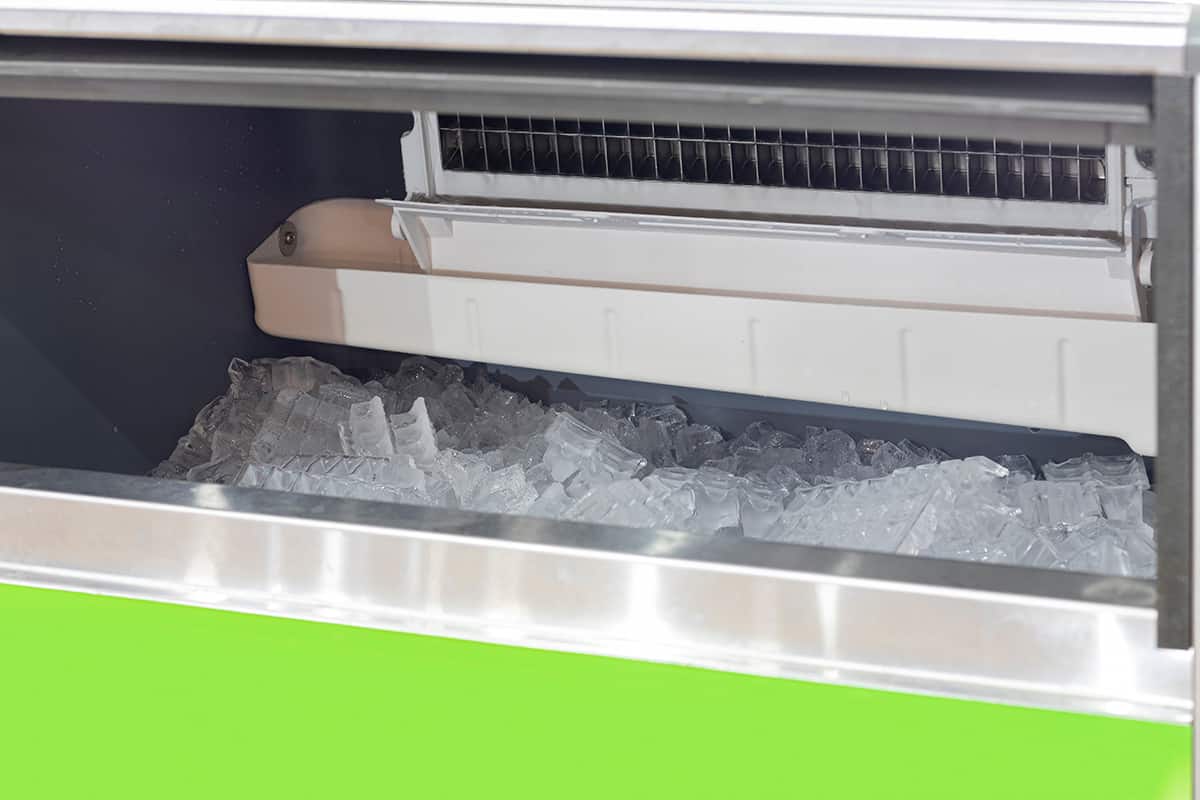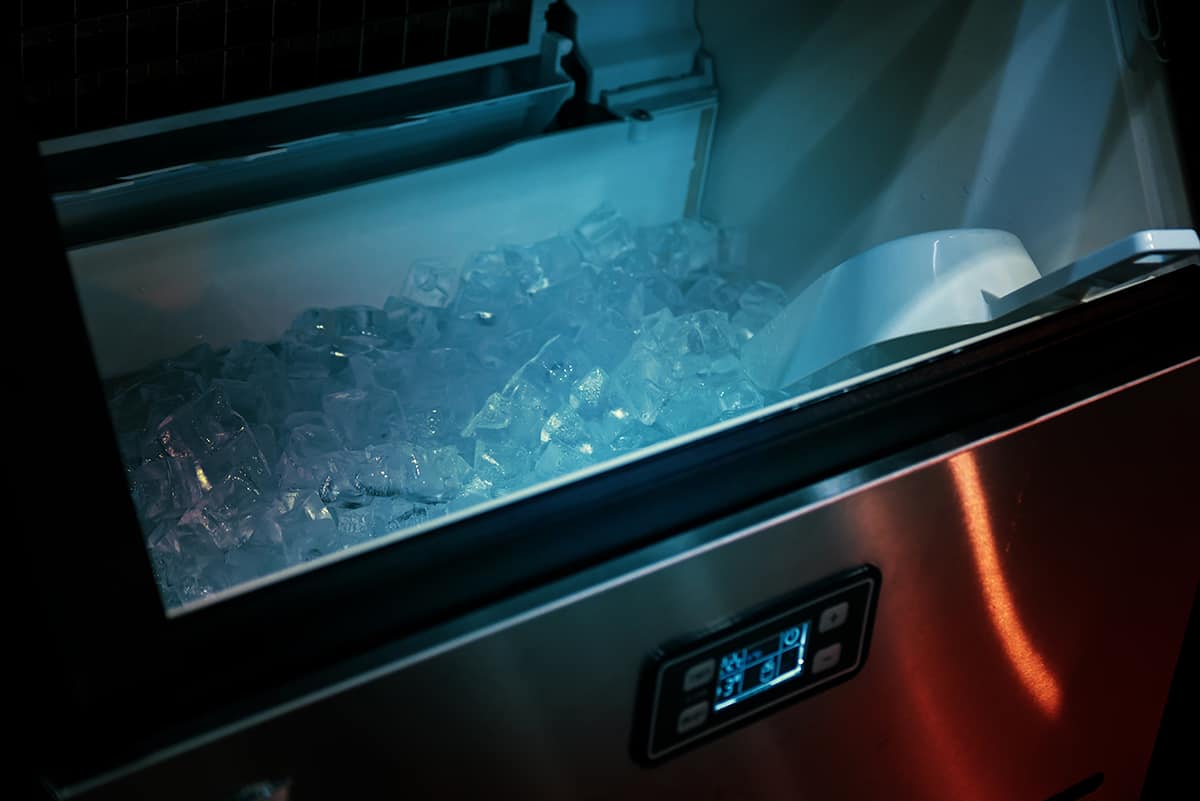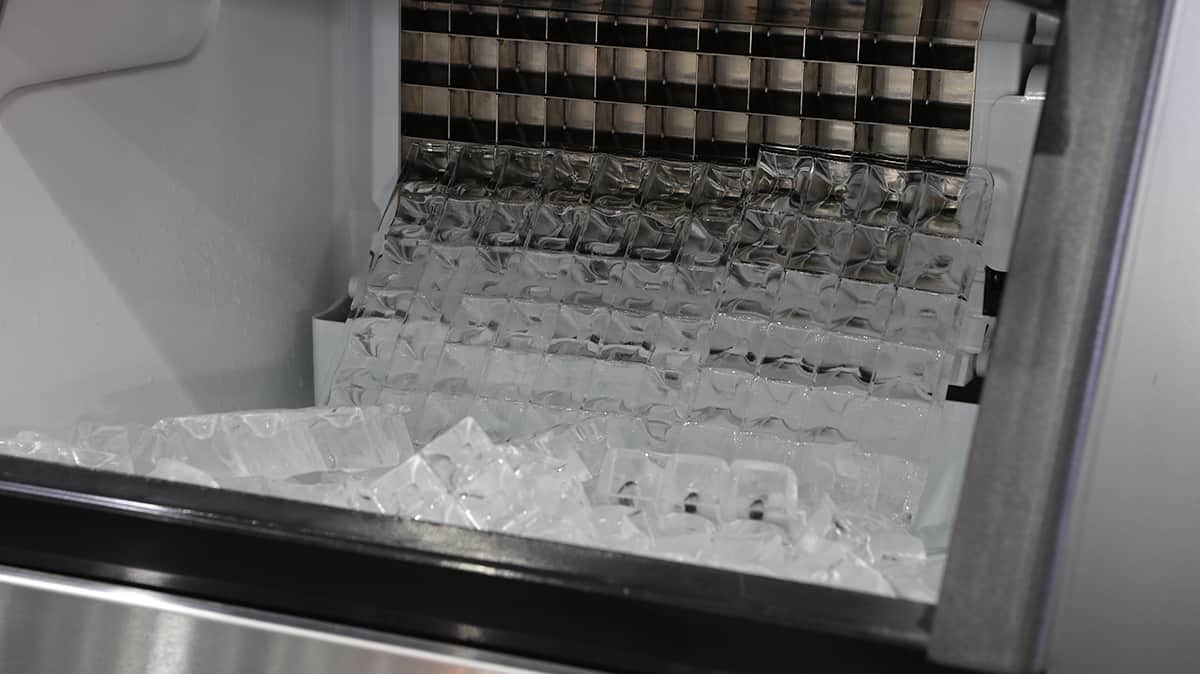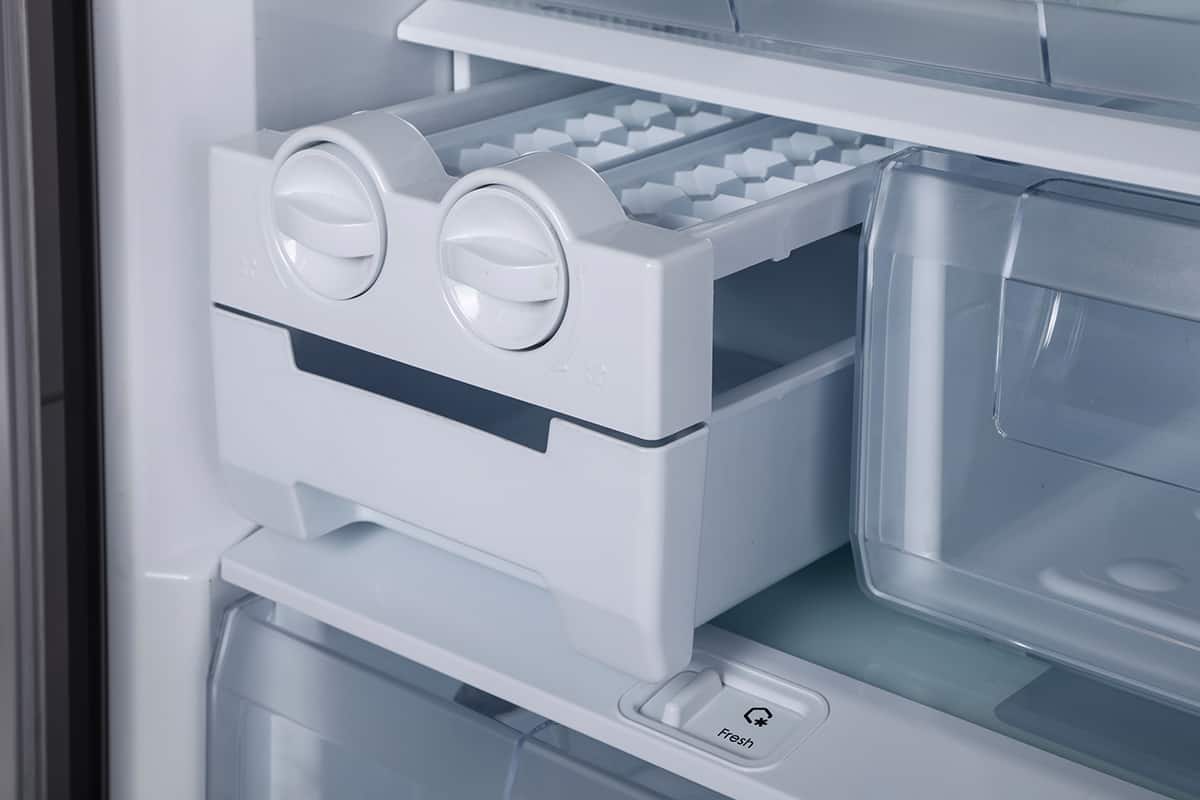Ice makers are great for making one thing—ice. However, you should know how long it takes the unit to make ice. That way, you’ll have all the ice you need to cool down beverages and blanched vegetables when you need them.
Usually, built-in ice makers in freezers take 90 minutes to prepare a batch of 8 to 12 ice cubes. However, the exact timeframe depends on several factors, including how powerful the freezer is, what temperature setting it’s on, and how large the individual ice cubes are.
In today’s guide, I’ll describe how an ice maker works, the time it takes for an ice maker to make a batch of ice, how you can quicken the process, and how built-ice ice makers in freezers compare to countertop models.
How Does an Ice Maker Work?
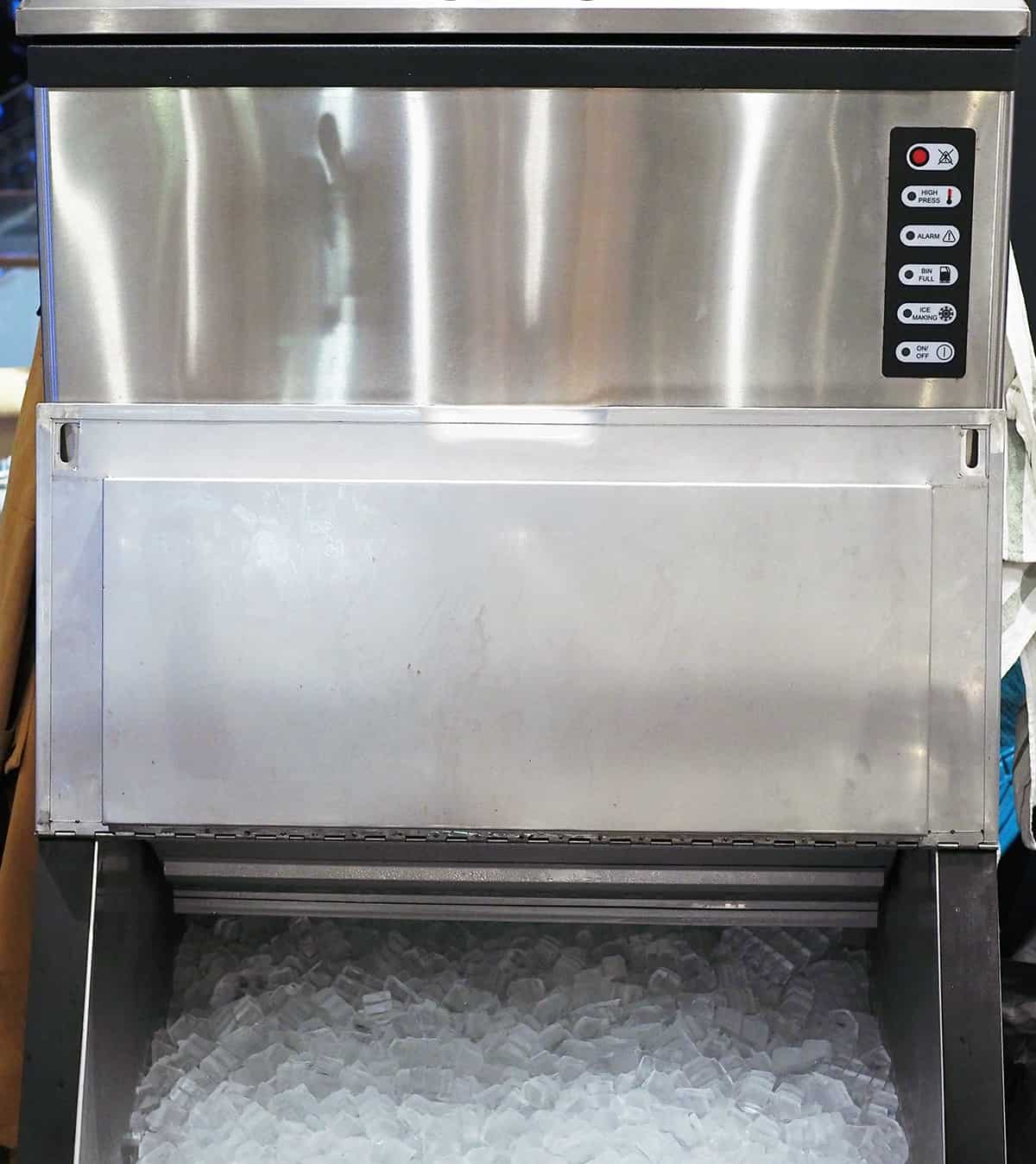
Many modern refrigerators eliminate the need to manually fill an ice tray, move the tray to the freezer, and spill everything in the process. If you have such a refrigerator, all you have to do is hook it up to your home’s water supply line, and the built-in ice maker will make ice for your whenever you want.
But how exactly do these machines work? There are a few parts you need to know beforehand:
- Pump—The electric motor that draws water from a collection sump.
- Collection Sump—The basin or reservoir of water that is constantly filled with water through the water line.
- Water Line—The hose or pipe system that connects the ice maker to your home’s water supply line. Another water line transfers water from the collection sump to the ice tray.
- Ice Tray—The prechilled mold that is used to create ice.
- Feeler/Control Arm—The moving arm located on the side of the ice bucket that measures how full the ice bucket is.
- Ice Bucket—The bucket that resides underneath the ice tray to capture the dislodged ice cubes.
Now that we know what the parts are, I’ll explain how they work together to make ice.
- The feeler arm measures how much ice is in the bucket. If the arm is lowered, then it will instruct the ice maker to prepare more ice. If the arm is raised, the ice maker will not prepare a new batch of ice.
- Water is suctioned from the collection sump and poured into the ice tray to form individual ice cubes.
- When the ice cubes are frozen, the ice tray will flip over to remove the ice.
- The removed ice lands in the ice bucket.
- The feeler arm is repositioned to the top of the ice.
- The process repeats itself from the first step.
How Long Does an Ice Maker Take to Make Ice?
The great thing about ice makers is that they automatically prepare new batches of ice without being told to do so. As long as the unit is on, it will continuously make ice cubes, depending on how full the ice bucket is.
From start to finish, an ice maker requires roughly 90 minutes to complete a batch of ice cubes. A single batch usually consists of 8 to 12 ice cubes. When the ice cubes are done, they will enter the ice bucket and will continue to be chilled by the temperature inside your freezer.
Speaking of which, if you were to prepare a batch of ice without a built-in ice maker, it would usually take up to 4 hours to complete in your freezer. This is mainly due to the fact that the water in the collection sump is constantly chilled. When it enters the freezing environment of the freezer, which does the actual freezing, it takes much less time to freeze than freezing room-temp or cold tap water.
What Factors Affect the Efficiency of an Ice Maker
Some ice makers can make ice in as little as 90 minutes, while others may take 33% longer to make ice. I’ll explain the various factors that affect how long it takes to make ice in an ice maker.
Location
Generally speaking, you should keep all of your chilling appliances away from sunlight. If you don’t, the heat from the sun might actually increase the temperature inside and outside the appliance, forcing its motor to work overtime to lower the temperature continuously.
Freezer wattage
The wattage figure on any appliance determines how efficient it is. A higher wattage rating generally means that it will take the unit less time to cool down or heat up. In a freezer’s case, higher wattage means more versatility in terms of temperature settings.
Temperature setting
Inside your freezer, you’ll find a dial that lets you lower or raise the internal temperature. Although the temperature should never exceed 32°F, a higher temperature setting makes it, so your ice maker will take longer to make ice cubes.
Ice tray size
Larger bodies of water take longer to freeze than smaller bodies of water. The same principle applies to ice cube trays. If the individual ice cube sections are larger than normal, they will take longer to freeze.
How to Make Ice Cubes Faster in an Ice Maker

Here are 3 tried and true things you can do to make ice faster in your built-in ice maker.
Clean your freezer
More stuff in your freezer may get in the way of air circulation, so your ice cubes will have less exposure to chilled air than normal. Try clearing out the contents of your freezer or at least eating most of the food you froze months back. You can also try defrosting the freezer and washing its walls with a 1:1 mixture of vinegar and water to deep-clean the entire interior.
Inspect the freezer’s door seal
The magnetic door seal on your freezer is there to prevent hot air from entering the freezer and cold air from leaving it. If there’s even a tiny crack in the seal, then your freezer will continue to lose cold air, and your ice cubes will take longer to freeze. It’s advised that you replace the entire seal if there’s even a tiny, unfixable gap.
Lower the freezer’s temperature
The final thing you can do is lower the freezer’s temperature or move the dial to Hi-Power. This will freeze ice cubes more quickly, but it may lead to unintended consequences, such as ice buildup in the ice maker, which may require resetting or defrosting to get rid of.
Countertop Ice Makers vs. Refrigerator Ice Makers
If you don’t have an ice maker built into your freezer, you might want to consider getting a portable countertop ice maker. Let’s take a look at how they differ.
Ice production
In general, built-in ice makers don’t make nearly as many ice cubes per day than portable units. On average, a portable ice maker can make 25 pounds of ice daily, whereas refrigerator ice makers make just 5 to 10 pounds per 24 hours. Best of all, portable ice makers require under 15 minutes to prepare a batch of 8 to 10 ice cubes!
Cost
Refrigerators are costly appliances that people replace once every 10 to 20 years. It might not be worth investing in a brand-new fridge just to reap the benefits of an ice maker. However, you can spend less than half the cost on a brand-new fridge to pick up a reliable portable ice maker.
Portability
This is a no-brainer. Countertop portable ice makers can be moved from place to place. While you could technically do the same with a fridge, it’s not feasible to do so.
Versatility
Portable ice makers make ice and nothing more. Sure, they make nugget-style ice cubes, but you can’t chill meats or veggies in them. The refrigerant in an ice maker is localized in the prongs that freeze water upon contact. If you leave the ice in the ice bucket for too long, it will begin to melt. Refrigerator ice makers, however, will keep ice frozen until you remove it from the fridge.
